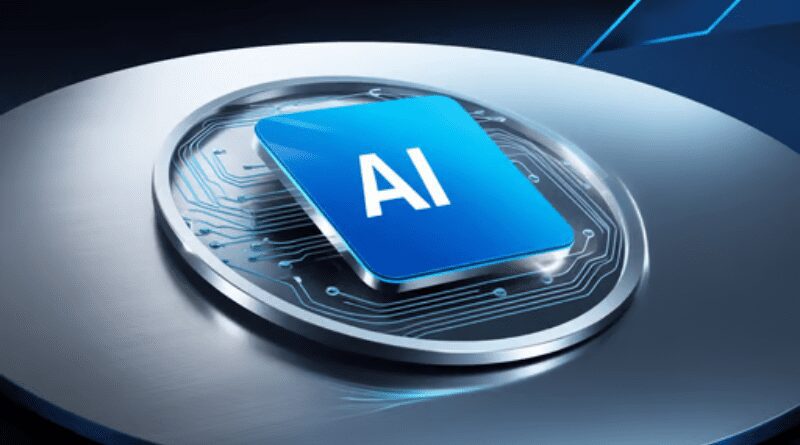Microsoft expert: “We are closer than we think to achieving human-like artificial intelligence.”

Artificial general intelligence (AGI) is a term that refers to a hypothetical type of AI that possesses human-like cognitive abilities and can perform a wide range of tasks rather than simply excelling at a specific task, which is what most current AI systems do, or narrow AI.
MicrosoftAI has recently made significant strides toward producing super-AI, most notably the Microsoft AI Diagnostic Orchestrator (MAI-DxO), which outperformed specialized doctors in diagnosing many complex medical conditions.
Let’s explore this type of AI and why it rivals human intelligence in the following paragraphs.
What is Artificial General Intelligence?
ArtificialGeneralIntelligence AGI, also known as “strong AI,” is a hypothetical type of AI capable of understanding, learning, and applying knowledge across a wide range of cognitive tasks, just as humans do.
Unlike current limited or weak AI systems, such as voice assistants, recommendation systems, and image recognition software, which can excel at a specific task or a limited set of tasks, AGI will be able to do the following:
learn from existing experiences, whether from pre-trained data or from new interactions and the real world.
- It will also be able to solve complex problems for which it was not explicitly programmed.
- It will be capable of abstract reasoning, grasping complex concepts, and applying them in different contexts.
- It will be creative, generating new and artistic ideas.
- It will be able to transfer acquired knowledge from one domain to another.
- It will be able to understand natural language, not just process it, meaning it will be able to understand complex contexts and intentions.
- It will have the ability to plan and make decisions, even in uncertain and changing environments.
In short, general artificial intelligence can perform any intellectual task that a human can, and may even surpass it in speed and accuracy.
What can Artificial General Intelligence (AGI) systems offer humanity?

The production of this type of SuperIntelligence could improve human life on Earth and solve many contemporary problems that may seem intractable, including:
Solving major global problems: by discovering new medical technologies in the fields of diagnostics and effective treatments, finding smart solutions for sustainable energy production, and inventing new materials with superior properties.
Tackling climate change: by improving resource efficiency, using clean energy, and protecting the environment.
Enhancing productivity and efficiency: by automating complex tasks and performing roles that go beyond routine tasks to those requiring critical and creative thinking.
Improving industrial and commercial processes: increasing efficiency and reducing errors across all sectors.
Developing new products and services: driving economic innovation.
Improving quality of life: by creating educational systems that adapt to each individual and tailoring treatment plans for each patient.
Personal assistance: producing robots and intelligent assistants that can understand complex human needs and provide support in every aspect of daily life.
Enhancing human creativity: By providing highly intelligent tools that aid in art, music, writing, and design.
Solving complex problems: Those that are currently beyond the human mind’s capacity.
Space exploration: By designing self-learning robots that can operate in harsh environments and explore new worlds.
What’s stopping us from producing #HumanLevelAI today?
Despite the tremendous leap forward in AI technologies, the road to achieving artificial general intelligence (AGI) appears long. This is due to the following reasons:
Limited understanding of how the human brain works: Neuroscience is still stuck on some scientific dilemmas, including how consciousness, intelligence, and abstract reasoning arise. To build AGI, we need a deeper understanding of these mechanisms.
Data efficiency: Current AI models require massive amounts of data for training, which is not how humans learn; they can learn from examples or a single experience.
Unsupervised learning: AI systems rely on supervised learning, which requires labeled data, while humans learn by interacting with the world without the need for explicit labels.
Learning by generalization and transfer learning: Current AI systems struggle to apply knowledge acquired in one domain to another.
Poor adaptability: When taking on new tasks or changing environments without retraining.
Common Sense: Humans have an intuitive understanding of the physical and social world, such as the fundamental laws of physics or people’s behavior. This kind of “common sense” is very difficult to encode into machines.
Human Deduction: The ability to reason from incomplete or ambiguous information.
Consciousness and Sentience: This is the biggest and most philosophical challenge. Can a machine have self-awareness? A sense of self? Emotions? Even if they aren’t necessary for practical intelligence, they are essential features of full human intelligence.
AI Architecture: Although deep neural networks have been successful, they may not be sufficient on their own to create artificial general intelligence.
Computational Power: Training and testing artificial general intelligence systems requires enormous computational power, which may exceed what is currently available.
Multimodal Learning: Humans gather and integrate information from multiple senses (sight, hearing, touch, and smell) to understand the world. AI systems still struggle to integrate information from different sources.
Bias and Ethics: If AGI is trained on biased data, it will replicate and deepen these biases.
Ethical Issues: How can we ensure that AGI operates in line with human values and ethics?
The Future of Artificial General Intelligence
Artificial General Intelligence (AGI) represents the pinnacle of human ambition in AI, heralding a radical transformation that will change the face of life on Earth.
While fully realizing AGI faces scientific, engineering, and philosophical challenges, its pursuit will spur human innovation and unleash the tremendous potential of today’s narrow AI.
The emergence of AGI will represent a paradigm shift that will enable us to solve the world’s most complex problems. However, with such enormous potential, responsible thinking in the design and development of AGI is increasingly important to ensure a future where the boundaries between human and artificial intelligence blur, one that promotes human values and serves all of humanity.




